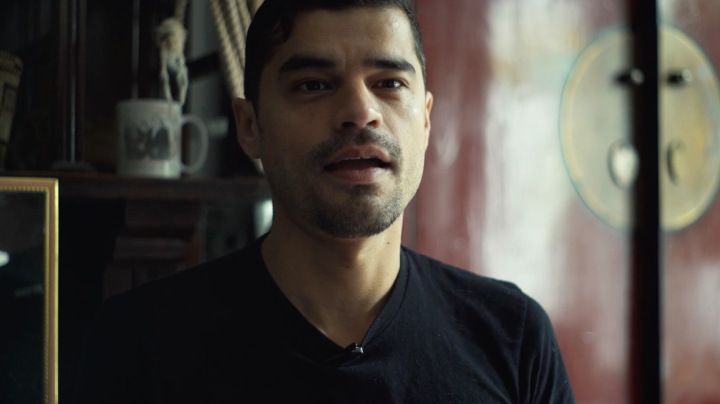This Film Imagines a World Where AIDS Never Happened and Our Heroes Lived

Leo Herrera in screenshot from KQED's 'Behind the Lens.'
“Imagine a world where AIDS never happened and our heroes lived. Who would they be? Who would we be?” Those are the questions animating The Fathers Project, the brainchild of Mexican activist-filmmaker Leo Herrera. A sci-fi documentary, Herrera describes his short film as “Cruising meets Black Mirror meets Beyonce’s Lemonade.” In other words, it’s a queer AF futuristic reimagining of what the world in the 21st century would be like if the LGBTQ community hadn’t needed to spend the ’80s and ’90s mourning the dead and fighting to get help for those lucky enough to survive.
As Herrera explains in a short behind-the-scenes video produced by Claudia Escobar for KQED Arts, the idea for Fathers began when he started doctoring images of his queer role models to see what they’d look like as older men. Aging Mapplethorpe and Haring, among others, he mused on how much artistic and political output we’ve been deprived of. “It’s an immeasurable loss,” he told Escobar. “But also, seeing what all these men made prompted me to just explore it head on. Okay well, they’re not here but maybe you could put yourself in their shoes for a bit and imagine what the world would like for you.”
Fathers is that attempt, set as it is in a kind of queer utopia where, for example, activist Vito Russo is running for president in 2020 (we’re already hoping Herrera is planning on selling those “I’m One of Vito’s Boys” tees as merch). But what would that United States look like? What does that optimistic vision of the present look like? Herrera eventually realized he didn’t need to start from scratch — which was good since he was working with a modest budget. He could just shoot San Francisco during Pride, or Provincetown and Fire Island in the summer. “We’re very good at creating queer utopias,” he admitted.
Ultimately, he hopes this counterfactual history helps further underscore the resilience of the gay community and serve as a celebration of queer life. “It’s a fear counter-antidote,” he added. “I don’t want them to think about AIDS when they watch it. But I want them to understand that the world that they live in was shaped by it.”